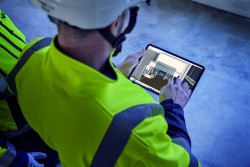Offsite construction is on the rise, with Governments globally placing their trust in it as a credible way to deliver more sustainable, high-quality housing quickly. The UK Government, for example, has boosted funding this year, enabling a taskforce on Modern Methods of Construction (MMC). Such national task forces are looking to methods such as manufactured, panelised systems that are fabricated off site and assembled on location. In doing so, the construction industry can replicate the success of other sectors like the automotive industry, which has had a design-led approach for generations.
A Change in Design Philosophy
Despite widespread agreement that offsite construction will feature heavily in the industry’s future landscape, some professionals question why the focus is primarily on the construction stage. Getting offsite right from the design stage maximises the potential savings and efficiencies, which influences the overall success of a project. If offsite construction and other MMC are to meet the industry’s challenge of keeping up with demand, then offsite methods need to be baked into the very design of a project. This will inevitably need a change in thinking and mindset.
Design for Manufacture and Assembly
Some industry experts are proposing that instead of ‘offsite construction’ being the adopted term, the industry should start to adopt DfMA, short for Design for Manufacture and Assembly to describe designs that are prepared with ease of manufacture and assembly in mind. In DfMA, all aspects of a building are broken down into prefabricated components, with both the manufacture and assembly designed and optimized by engineering teams. This approach uses design as a way to create manufacturing solutions with standardised parts that are digitally tested, manufactured precisely, and assembled easily. We agree that language is important, however, this is arguably unnecessary and overly prescriptive, excluding projects that integrate elements of MMC at later stages. It is, at best, premature or overly optimistic. But putting the acronym of DfMA aside, putting design first results in highly efficient assembly lines and production facilities can be further developed, which benefit long-term supplier relationships while improving safety and ensuring consistently superior quality products. Building Information Modelling, or BIM, has an important role to play in enhancing workflows.
Benefits to Assembly and Manufacture
Through the use of digital design, offsite manufacturing allows facilities to develop highly precise fabrication methods that can be tested digitally first. The design-first approach means structural components like panelised walls, for example, can be guaranteed to withstand construction pressures and fit seamlessly. Because offsite construction can make use of standardised components, these can be first modeled in a virtual environment and tested to ensure every stage of construction works as it should. Before something like a precast concrete retaining wall is installed, it will first be rendered as a dynamic 3D model that can be tested under realistic virtual physics to ensure it is suitable for further development, according to the above article.
Using design here means any potential issues with the component will be flagged before assembly. This is in contrast to traditional construction, where problems may not occur until the time of assembly. Even in some approaches to offsite construction which are not design-led, there are efficiency opportunities lost. Here, if tolerances have not been tested digitally, offsite time and cost savings will be nullified, requiring a reworking of the fabrication process.
The fabrication stage benefits from being design-led too. Whereas onsite, a large steel structural element, for example, would typically need to be bolted together on-site, DfMA can make use of facilities such as CNC machinery and 3D modeling that allows the testing of alternative connections such as welding options. This translates into structural components that are of higher quality, with fewer individual parts.
Designing for Building in Mind
Designing structural components with the building aspect in mind, not only ensures a smoother construction process but lets projects reap more of the benefits from offsite construction. Digitally testing designed components before they even reach the fabrication process means that all aspects of construction are taken into account by the time they reach the point of assembly, including individual crane positions, for example.
While offsite construction is becoming more widespread in the industry, the construction philosophy needs to be present from the initial stages.









